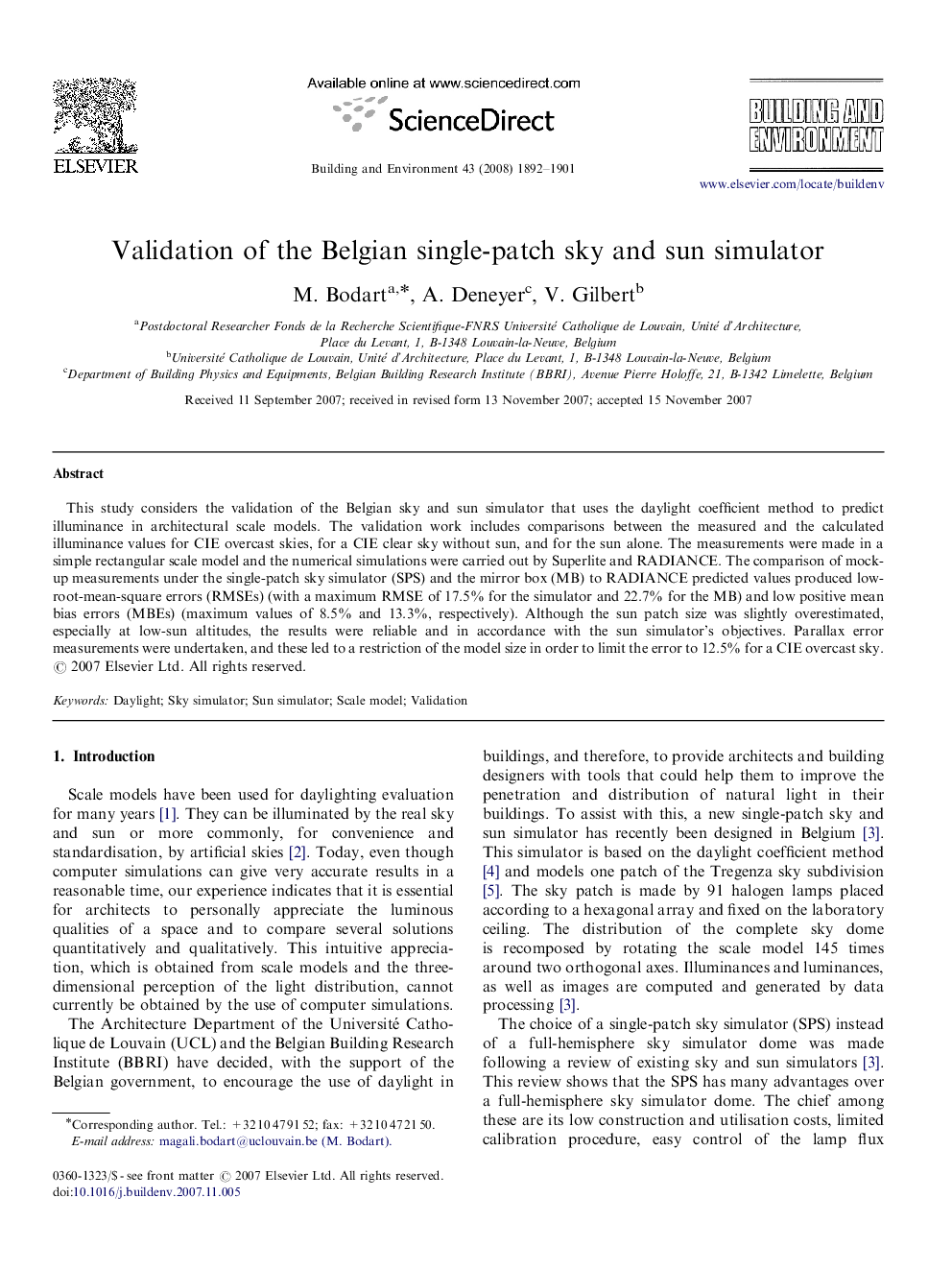| Article ID | Journal | Published Year | Pages | File Type |
|---|---|---|---|---|
| 249734 | Building and Environment | 2008 | 10 Pages |
This study considers the validation of the Belgian sky and sun simulator that uses the daylight coefficient method to predict illuminance in architectural scale models. The validation work includes comparisons between the measured and the calculated illuminance values for CIE overcast skies, for a CIE clear sky without sun, and for the sun alone. The measurements were made in a simple rectangular scale model and the numerical simulations were carried out by Superlite and RADIANCE. The comparison of mock-up measurements under the single-patch sky simulator (SPS) and the mirror box (MB) to RADIANCE predicted values produced low-root-mean-square errors (RMSEs) (with a maximum RMSE of 17.5% for the simulator and 22.7% for the MB) and low positive mean bias errors (MBEs) (maximum values of 8.5% and 13.3%, respectively). Although the sun patch size was slightly overestimated, especially at low-sun altitudes, the results were reliable and in accordance with the sun simulator's objectives. Parallax error measurements were undertaken, and these led to a restriction of the model size in order to limit the error to 12.5% for a CIE overcast sky.
